Author: erkan
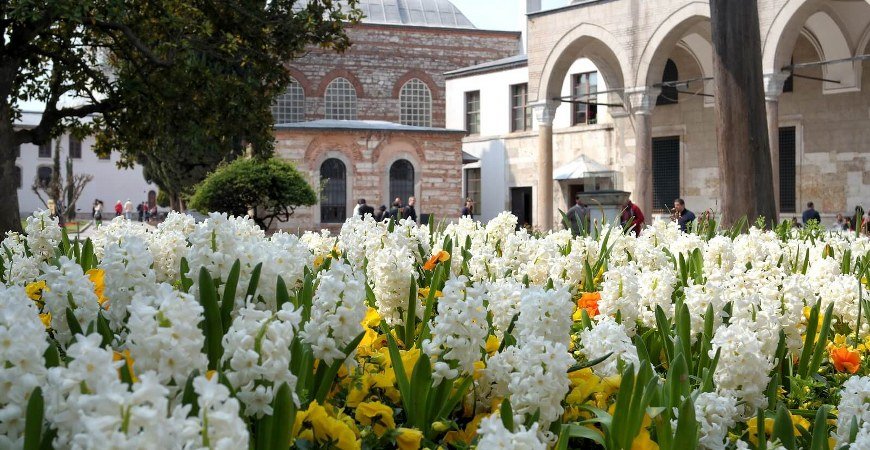
The Flowered Shield Istanbul Topkapi Palace– Chapter 2
The Flowered Shield Istanbul Topkapi Palace– Chapter 2,
More suited to a ceremonial parade than a warring army… A ‘shield as you know is a means of defense. Before the invention of the gun, it was held in the left hand as protection in hand to hand fighting from arrows and lances, stones and flames thrown from catapults, and sword thrusts. They were either round or four cornered. The best shield is both light and strong. For this reason, they were usually made of rhinoceros, elephant or crocodile skin, or if these were not obtainable, from ox skin. There were also shields made of fig or willow branches. So this shield in question was woven on top of a strong skin of this type embroidered with flowers and a fat steel knob placed in the center. On the inside is a handle for holding the shield. Shields with a knob in the center are called “domed shields”. Its purpose was to make blows slide off and so render them ineffective. This one, with its dried ‘willow branches, is both elastic and as strong as steel. The shield in Topkapi Palace embroidered with flowers in silk thread is said to have been used by Sultan Suleyman the Law Giver during his Mohac campaign. In the Mohac Campaign Register in Topkapi Palace archives, it lists the shields used by Sultan Suleyman’s army: 235 willow branch, 219 round steel, 2084 janissary and 1000 spiked shields, and besides these 637 habits shields made of fish skin. It also records in the Register that Suleyman’s army consisted of 200 thousand foot soldiers, 50 thousand cavalry, 500 canons, and 10 thousand chariots. From the records, it can more clearly be understood why the European historians call Sultan Suleyman the Law Giver the ‘Magnificent’. His army was equipped with the best and most modern weapons, was the most organized and disciplined army of any at that time. And it was led by a just, well informed and experienced statesman like Sultan Suleyman.
You will continue to find more details about The Flowered Shield Topkapi Palace in Istanbul – Chapter 3.

The Flowered Shield Topkapi Palace in Istanbul – Chapter 1
The Flowered Shield Topkapi Palace in Istanbul – Chapter 1,
In 1966 an exhibition called Turkey’s Art Treasury was held in Ameri-ca. A shield from the period of Sultan Suleyman the Law Giver was taken. to this exhibition from Topkapi Museum. The shield is 65 cm. wide and shaped like a round tray. So that it would be light it was woven out of fine willow branches like weaving a basket, and then decorated with flower motifs such as tulips and carnations using silk thread. It is very beautiful.
Among the 282 valuable Turkish works of art on exhibit the one which drew most interest was this decorated shield. They could not understand why a shield should have been decorated with flowers in bright colors. and what most visitors visualized when they thought of a shield was something made of iron or steel. What was the point of a shield made of woven willow branches and decorated with silk embroidered patterns? At first, the newspapers wrote: “The Turks faced their enemies with flowers and willow branches in battle. This refinement of theirs is astonishing.” The headline in another newspaper was very interesting: “The Turks besieged Vienna with flowers”, then they proceeded to express their admiration for the flowered shield. An illustrated catalog for the exhibition had a picture of the shield on the front cover, and postcards depicting the shield were sold. The shield was the centerpiece of the exhibition.
In fact, it is because foreigners are not well acquainted with the Turks and Turkish art that they find it surprising that a shield should be decorated and if you visit the section of Topkapi Palace where the old weapons are exhibited you will find yourself in an art museum. Decorated shields, carved bows, and arrows, pistols inlaid with gold and silver, beautiful swords, daggers decorated with precious stones, spears, maces, golden armor…
You will continue to find more details about The Flowered Shield Topkapi Palace in Istanbul – Chapter 2.
Dogala Underground City and The Til Village of Cappadocia Turkey
Dogala Underground City and The Til Village of Cappadocia Turkey,
Dogala Underground City
One of the underground cities of the region referred to earlier is situated at the village of Dogala on the south slope of ErtaHilll, 7 km. to the west of Derinkuyu. All the entrances to this are blocked with the exception of one air duct which is barely wide enough for one person to pass through. The interior, though partially fallen in and blocked, is very interesting. As at Derinkuyu there are stone doors, storage chambers, bedrooms, water tanks and three halls placed side by side and with niches at both ends. The first and second stories are accessible, but the stories below are now flooded so that it is impossible to ascertain the extent of the city and the number of its stories.
The Til Village (Till Koy)
Til village is a small village 9 km. to the east of Derinkuyu, on the main road to SoOanli and is situated on the slope of a hill. What makes this place remarkable is the presence of a so far little explored, unrestored underground city. Between 1969-71, the author, together with Dr. Martin Urban, the noted German writer of books on tourism, visited this underground city twice. Because of the rubble and earth with which it is filled, it is impossible to tell how large it is or of how many levels it consists, yet we were able to explore the two upper levels which can be reached. As at Derinkuyu and other underground cities, this one also has stone doors separating the different levels, living quarters, stables, storage rooms, kitchens and ventilation chimneys. The bottom of these wells is filled with water which is drawn by the people of the village by means of pulleys. Also here, some parts of the top story serve as storage rooms or tables even today. On the west side of the village, there is a large mound containing hundreds of graves of uncertain date. The remains of a not so well preserved caravanserai dating from the Seljuk period are seen to the south. In that period the shortest caravan route from Istanbul to Iran passed they through this region and the inns of Sultan Hani, YeVhisar, Incesu, Til Koy, Dogala, Agzi Karahan, Alayhan between Sivas and Kayseri, and Sultan Hani between Aksaray and Konya were parts of a chain of caravanserais established on this route for the convenience of travellers.
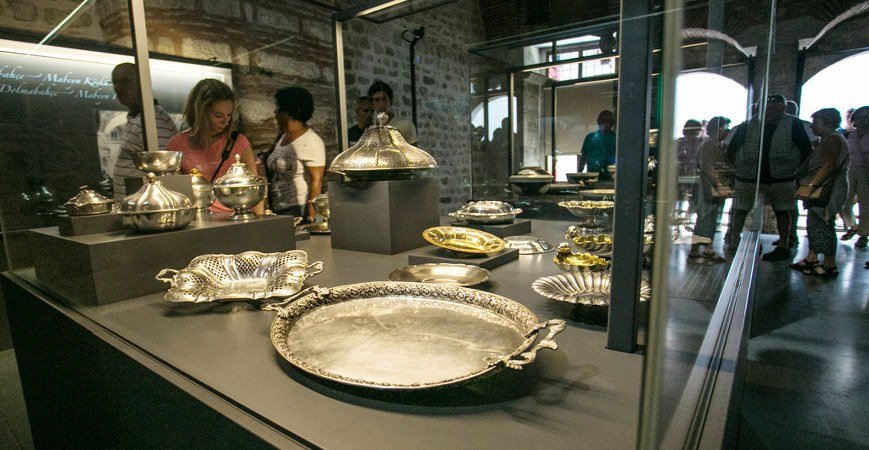
The Porcelain Section of Topkapi Palace in Istanbul – Chapter 3
The Porcelain Section of Topkapi Palace in Istanbul – Chapter 3,
Today not even the most modern porcelain factory is capable of producing a transparent and colored glaze like that, which cannot be scratched with a diamond. The masters who made these left, taking their art and skills with them.
One room of the Porcelain Section is devoted to Japanese porcelain of the 17th and 18th centuries. The other rooms contain European porcelain. most from Vienna and Sevres. This was either bought or presented as gifts by European countries. The last room is devoted to Turkish glass and ceramics. Most of these beautiful works were made in the Ceramic and Glass Factory which was established in Beykoz in 1845. During the time of the Anatolian Seljuks, the art of ceramic making reached its height, and many of the monuments built at that time had their walls decorated with ceramic mosaics. Ceramic dishes and bowls were also made during this period. During the Ottoman period with the reign. of Yavuz Sultan Selim the Iznik ceramic factories began production of wall tiles, plates, vases and dinner services which became very popular. After the 18th century, the Iznik factories began to lose their fame, and the Kutahya and Canakkale ceramics factories began to gain importance. However, these factories never managed to develop the art of ceramic making any further. After the one in Beykoz, a Ceramic Factory was opened in the Yildiz (Star) Palace in 1893 and their products were equal to those made in Europe. Besides the glass produced at the factories at Beykoz and Yildiz the Porcelain Section contains porcelain dinner services, tea and coffee cups, tombacs, vases, rosewater bottles, nightingale’s eyes (narrow liqueur bottles decorated with coloured dots and tracery), stucco pipes covered ‘with silver and gold baked in the pipe bowl kilns in Galata, and coffee sets made there.
However, all eyes are on the Chinese porcelain exhibited in the 20 chimneyed and domed former kitchens of Topkapi Palace. Visitors are left spellbound by the Seladon ware which chimes when you touch it, by the dinner services in imperial yellow, the vases of all different heights and shapes, by this porcelain which covers a thousand years. Topkapi Palace Museum is proud and delighted to have such a collection, the biggest in the world. It was such a palace that the most valuable services for use by kings and sultans were used to give dinners to 5000 people and collected the richest porcelain treasury in the world.
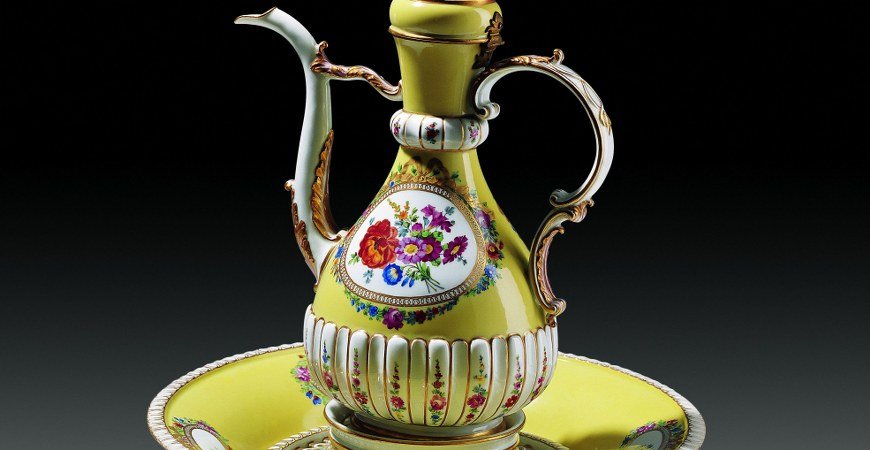
The Porcelain Section of Istanbul Topkapi Palace Museum – Chapter 2
The Porcelain Section of Istanbul Topkapi Palace Museum – Chapter 2,
They informed the emperor, who was overjoyed to hear about the discovery and had a poisoned drink prepared and some drops poured into one of the dishes. And what did he see when he poured this liquid into the glazed plate? That beautiful gleaming green turned black and then the plate cracked. After this successful experiment, he had a factory set up in the palace and had these green glazed dishes manufactured by the thousand. However, instead of teaching the secret to others, those who knew of it kept it to themselves, and when they died the secret of making the glaze went with them. It was no longer possible to make Seladon ware.
The other Chinese porcelains from the dynasties between the 13th to the 19th centuries have their place in the collection. The porcelains of the Ming dynasty which lasted for nearly three hundred years, and the Shing period, decorate the room like a flower garden with their colors of green, pink, white, yellow and red. This collection dating back a thousand years is a priceless treasury. How does it come to be in Topkapi Palace? It is very hard to answer this question. According to palace records, some of it was brought to Istanbul by Yavuz Sultan Selim on returning from his Egyptian and Persian campaigns. Some of it was presented to Sultan Suleyman the Law Giver by the Chinese emperors. Some were bought especially for the palace. Countries which had heard of Sultan Suleyman’s interest in porcelain, and that he was especially fond of the blue and white porcelains would send him boxes and boxes of dinner services, vases, and plates, in order to win his favor. Because of the technique of decorating under the glazing the colors of the patterned porcelain did not fade even after hundreds of years, nor did the tiniest crack appear in the glaze.
You will find more information about The Porcelain Section of Topkapi Palace Istanbul in chapter 3.
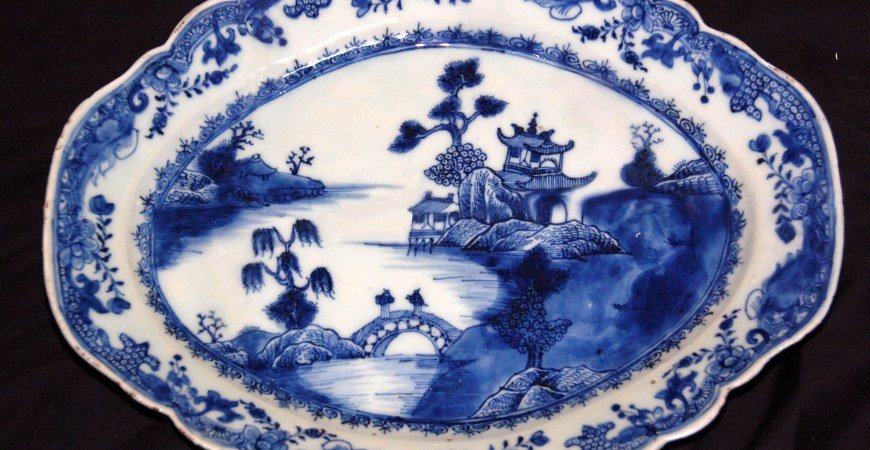
The Porcelain Section of Topkapi Palace Museum Istanbul – Chapter 1
The Porcelain Section of Topkapi Palace Museum Istanbul – Chapter 1,
One section of Topkapi Palace contains such a dazzling treasury that it has no equal anywhere in the world, and no expert can put a price to it. This is the Porcelain Section containing Chinese, Japanese, European and Turkish porcelain. Do not dismiss this section as mere porcelain. Last year the papers reported that Paris antique dealers had sold some old Seladon Chinese porcelain for hundreds of thousands of lira. Topkapi Palace contains more than 1300 pieces of Seladon porcelain, and 12 thousand pieces of Chinese porcelain, to give you some idea of the value of this collection. There is no such collection in any other country in the world, even the country of its origin China itself. Porcelain was originally a Chinese art, which spread from there to the rest of Asia and from there to Europe. Chinese porcelain became famous back in the 6th century, and the caravans which brought silk back from China began to bring porcelain too. The oldest Chinese porcelain in Topkapi Palace is the Green Seladon ware which was made between 960 -1279. Seladon is considered the world’s oldest porcelain. It is said that when any poisoned food or drink is placed in a Seladon ware vessel its color changes and it cracks. For this reason, Seladon was greatly valued in palaces as protection against poisoning, and rulers chose to eat off these dishes.
According to legend Chinese emperors lived in extreme fear of being poisoned and used to waste away and finally die of hunger from refusing to touch the food and drink placed before them. Chemists and alchemists worked for months to discover a mineral acid called “sir.” They covered the surface of dinner services with it. When poisoned food was put on the dishes they changed color and then cracked.
You will find more information about The Porcelain Section of Topkapi Palace Museum Istanbul in chapter 2.
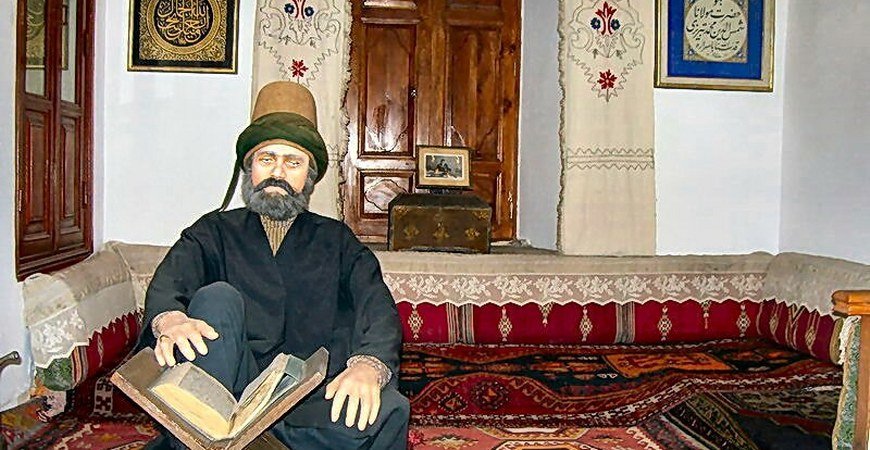
First Edition of The Mesnevi & Mevlana in Konya – Chapter 2
First Edition of The Mesnevi & Mevlana in Konya – Chapter 2,
They began to write the Mesnevi. Day and night, on the road and in the vineyards Mevlana recited the poetry without stopping to rest. With love and ardor, Celebi Husameddin wrote without tiring. The volumes were being filled. When almost at the sixth volume the number of couples was 25, 618. Celebi Husameddin only kept up with Mevlana with difficulty, he composed the verse so fluently as if it were a flowing stream. Whenever Mevlana stopped for a while Celebi would read the draft to Mevlana and they would make small corrections. Upon completion, the draft was re-written and arranged into six volumes. However, this first copy has not survived. The oldest edition in existence is a handwritten manuscript, the earliest to have survived to the present day among the thousands of copies of the Mesnevi which were made. It is exhibited in Konya Mevlana Museum. This manuscript book is not only the first edition of Mevlana’s Mesnevi, but a Seljuk period masterpiece of the art of writing and gilded illumination. Its value cannot be measured in millions. According to an inscription in the book, it was written in 1278, 5 years after Mevlana’s death and completed in the month of November. It was inscribed by the calligrapher and Mevlevi Dervish Mehmed son of Abdullah from Konya and decorated by an artist called Mevlevi Muhlis. The title pages of each volume are gilded from top to bottom and the other pages arranged in four columns, each page made of silk paper. Its binding is a work of art in its own right. The gilded pages shine as they did when the works was written 700 years ago. It is recorded at the end of the book that this copy of the Mesnevi was inspected by Celebi Husameddin and Mevlana’s son Sultan Veled, who pronounced it faithful to the original copy. There are many manuscript books in the world’s museums, there for their age, or because they are a single edition, or for their artistic value.
But none of them can be compared to this edition in the Mevlana Museum, for the following reasons:
1 — This work is that of Mevlana Celaleddin, one of the world’s great men. His works have taken their place among the world’s classic literature.
and have been translated into many languages, and this is the first edition of his greatest work the Mesnevi.
2 — It is one of the finest examples of the Seljuk period art of decoration.
3 — Not only its decoration but also the paper on which it is written, the writing and the binding are examples of the finest craftsmanship. Each of its pages is a work of art in themselves.
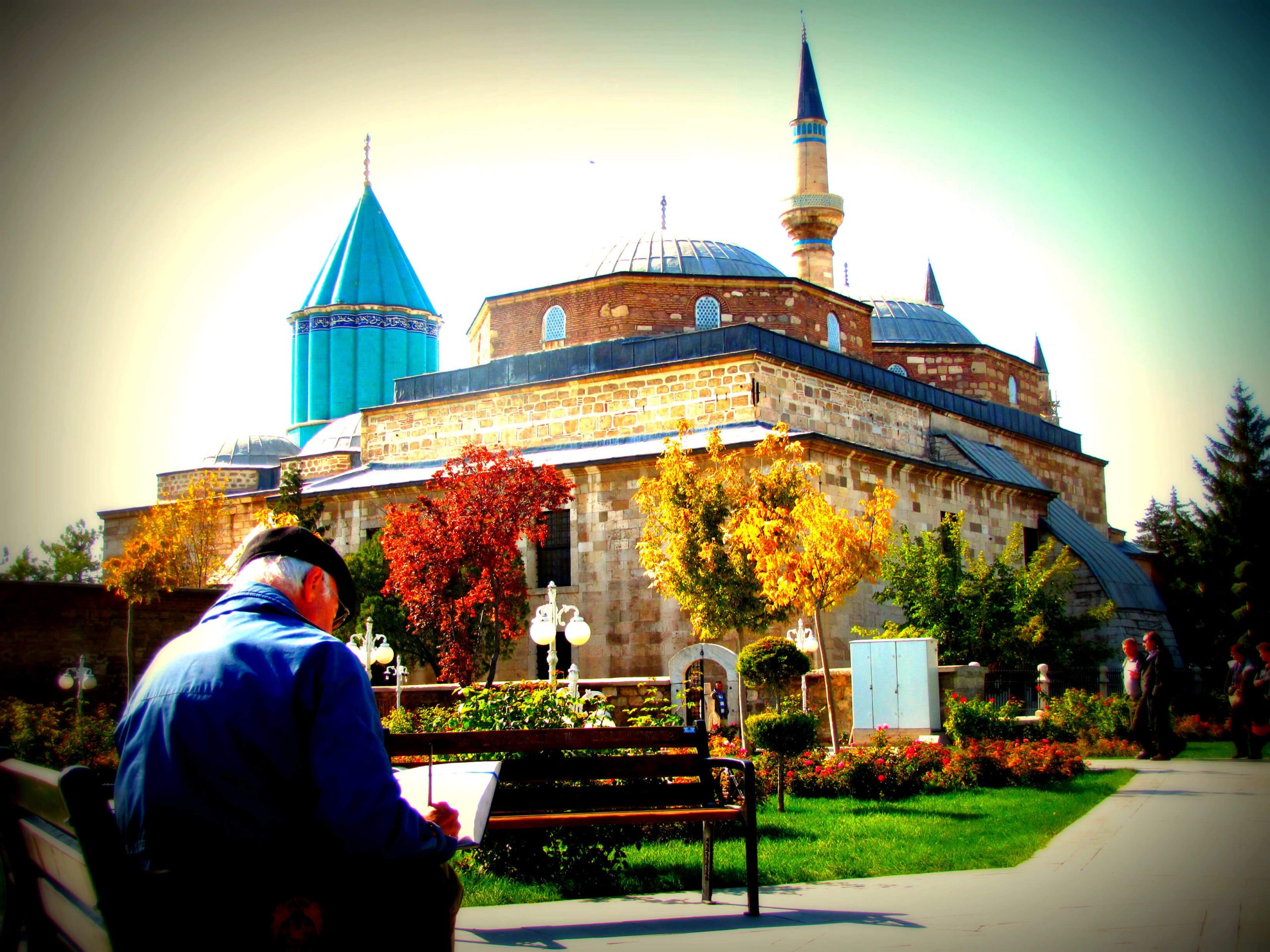
First Edition of The Mesnevi in Konya – Chapter 1
First Edition of The Mesnevi in Konya – Chapter 1,
As time passed the life full of love and ecstasy of the great mystic Mevlana Celaleddin was approaching its spiritual culmination. His disciple Celebi Husameddin was closely following this progress of his beloved Mevlana. He longed and felt it his duty to propagate Mevlana’s perfection, to draw the curtains hiding this sun of love and enlightenment, and illuminate the whole world with its beams. At the same time, the Great Divan had at last been completed made up of the ones written by Mevlana. But now Mevlana could create a more mature and satisfying work. His extensive knowledge, technique, and mastery of the art of poetry and ability to compose a poem without pondering at length on rhythm and meter would now allow him to write such a masterwork. Husameddin was just waiting for an opportunity to tell Mevlana about this idea. One day this opportunity arose. Mevlana was wandering around a garden through which a stream was flowing, with Celebi, and reciting poetry. Just at the right time, Celebi opened the subject:
— My Sultan! You have composed many modes. The Divan has grown large. Now if you could compose a book of poetry in the Mesnevi measure (rhyming couplets) you would become the traveling companion of all ashiks (a lover of God who traveled from place to place and sang or recited poetry). From now on instead of speaking the words of others, they would fill their spirits with your work. Mevlana was already prepared for this. With a smile, he took a piece of paper from the folds of his turban and handed it to Celebi Husameddin. On this paper were written the first eighteen couplets of the Mesnevi.
— Read it! he said, and Celebi began to read it aloud: Listen, how can I complain about the sound of the ney, How can I grieve for the partings. Since I left the busy world Men and women weep for my suffering I want a heart rent with a longing I want to lament and pour out my troubles. And the last of these eighteen couples is this: Can the raw understand the cooked?
I had to speak briefly and that is that. As Husameddin Celebi read he became exuberant. Tears ran down his cheeks. After he finished reading he knelt in front of Mevlana and kissed his hand:
— My Mevlana! 0 my sultan who has no equal! I implore you from my heart. May there be no end to these verses, may they extend to infinity, may volumes be filled.
— Celebi, if you consent to write them I will recite..
— I am ready, we can begin right away, Celebi replied.
Mevlana was pleased. He said to Celebi:
— Then write Husameddin. Husameddin, who was raised with truth, the sun of truth, write.
You will continue to find more about First Edition of The Mesnevi in Chapter 2
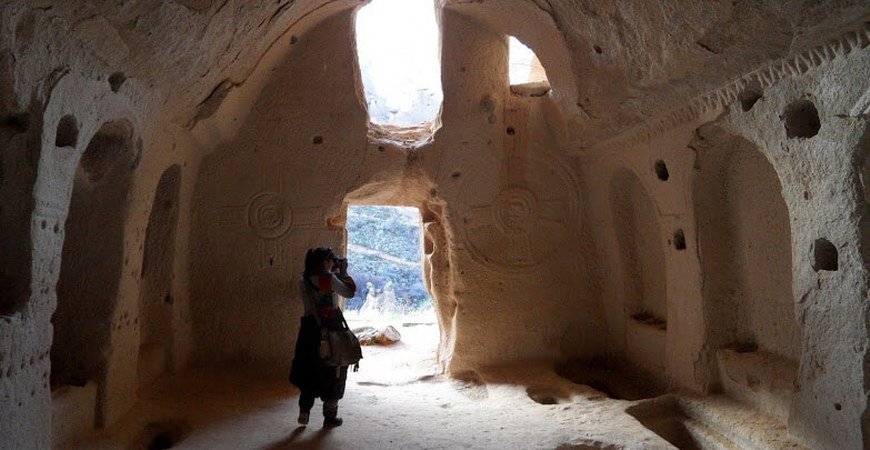
Hospital Monastery and Ayan in Derinkuyu of Cappadocia
Hospital Monastery and Ayan in Derinkuyu of Cappadocia,
Hospital Monastery
Within Derinkuyu there is a monastery which is said to be the first lunatic asylum in the world. Two Christians, Ayanaryeros, and Ayasozori, who lived in Derinkuyu before the time of the Turkish Republic, restored this monastery. Inside we see various artifacts, a dispensary, a cell for holy water, places where lunatics were tied, and rooms where people were given information concerning the treatment of the patients.
Ayan in Cappadocia
Around a Byzantine church, one km. to the west of Derinkuyu there exist hundreds of rooms. The secret tunnel which joins these rooms with Monastery at Derinkuyu was open as recently as 1945, after which date the roof fell in many parts and blocked the way; all the same, it is a very interesting place. Those parts which can still be visited have only one story; the twelve columns hewn out of the rock represent the twelve saints. The blocked passageways have unfortunately prevented us from making an accurate assessment of the area covered by this underground settlement; nor do we know how many levels it was built. The ventilation ducts of this underground city in some cases have been blocked by the villagers living in the neighborhood or natural causes, such as rain, snow and wind have deposited earth and rocks in them, rendering them useless.Owing to natural causes again the tunnel is blocked; in the part where one can walk one can see rooms on both sides. The Greeks who used to live at Derinkuyu called this place the church of the Twelve Saints.The world for Saint in Greek is Aghia, hence the present name was given to the place: Ayan. The structural characteristics of Ayan closely resemble those of the underground city of Ozkonak, which, alongside with Derinkuyu and Kaymakli, is one of the three underground cities open to visitors among more than thirty such places in this region.
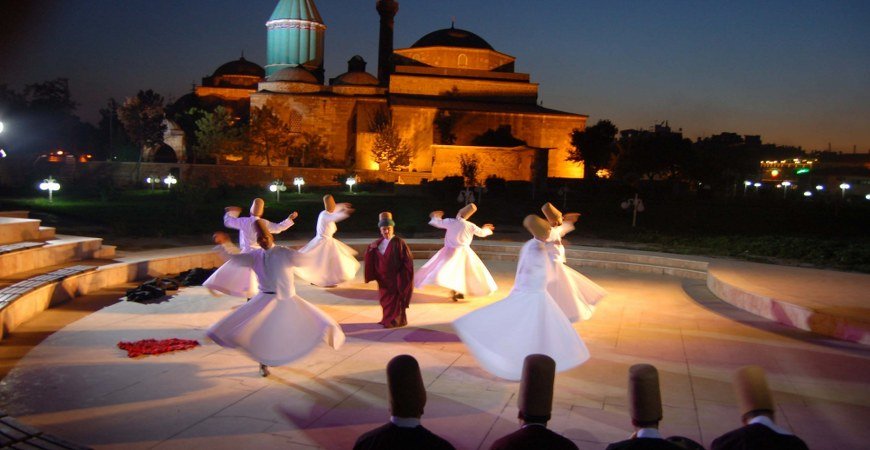
The Sarcophagus of Mevlana Konya – Chapter 3
The Sarcophagus of Mevlana Konya – Chapter 3,
What bucket was ever lowered into a well that did not come out full? Why should you weep when Joseph falls into the well.
If you closed your mouth on this side at death, open it on the other. Because you are far from the noise and bustle, you are in a spaceless World.
This is one of the ones written by Mevlana who considered death to be rebirth, and the day of his death to be the day he was united with God.
This high sarcophagus is a true masterpiece. No wooden work of art from the Seljuk period can parallel it. It is like a book with its Cufic, Sulus and Nesih inscriptions.
The sarcophagus covered Mevlana’s grave for many years until in the sixteenth century Sultan Suleyman the Law Giver had a marble 3W4* sarcophagus made to cover the grave of Mevlana and that of his son Sultan Veled buried beside him. This was covered with gold worked cloths, and the wooden sarcophagus placed over the grave of Mevlana’s father Beginner Sultani Bahaeddin Veled. The height of this wooden sarcophagus gives it the appearance of having been stood up on end, giving rise to a story that when Mevlana’s body was brought here for burial his father raised himself upright on account of the respect he felt for his .son’s wisdom and greatness. This is a legend which has been passed by word of mouth from generation to generation for hundreds of years. It is the Turkish appreciation of such an action, that his father should stand up out of respect for the greatness of his son, which keeps this legend alive. Visitors to the Mevlana Museum in Konya look at the high sarcophagus in the Tomb section of the museum with admiration. Whether because of its artistic beauty or because it is that of Mevlana, from whichever point of view one looks at it, excitement will swell in your heart, and carried away by the sound of the flute flowing down from the domes you will find yourself in another world. Here is something other than death. Mevlana speaks from a poem written on the sarcophagus: “When you take my soul, to die is as sweet as sugar. To be with you makes death sweeter than sweet life.” This, in short, is the story of Mevlana’s carved wooden sarcophagus, a masterpiece made 700 years ago.